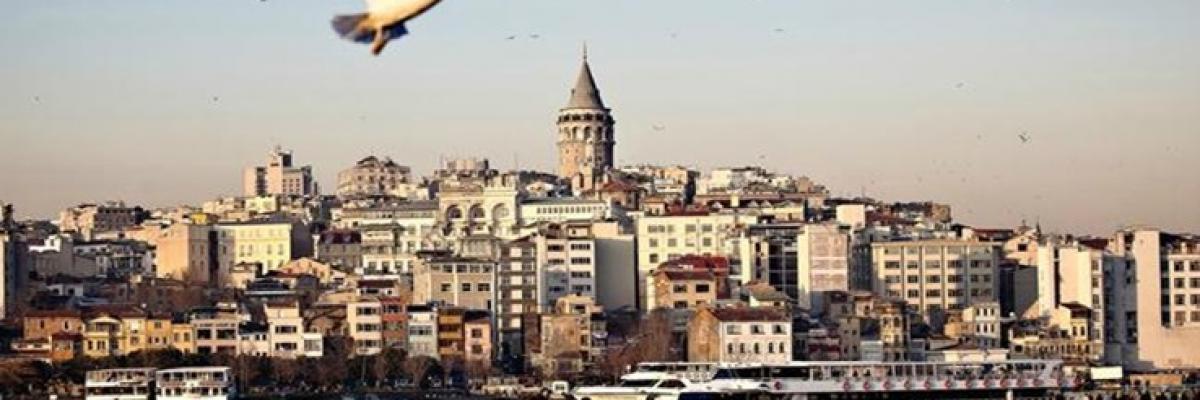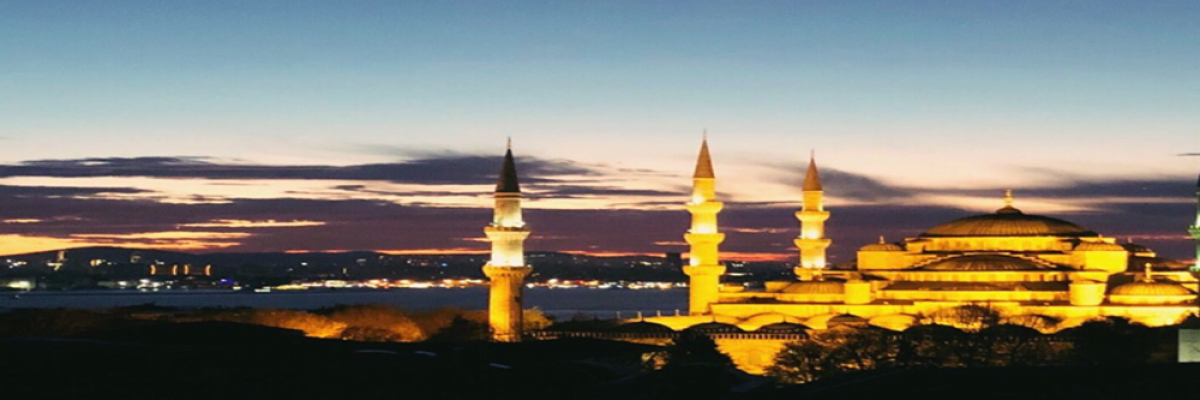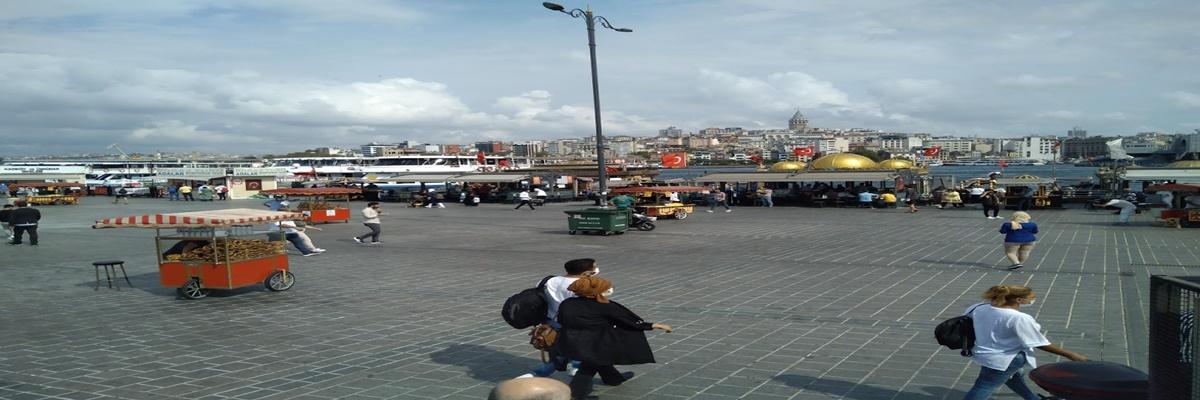MOUNTAINING AND MOUNTAIN TOURISM
MOUNTAINING AND MOUNTAIN TOURISM

Climbing-mountaineering, which is the choice of those who want to escape from city life and hide in nature and be isolated, is among the very risky extreme sports due to the dangers that may be encountered in nature. Mountaineering sports should not be done alone or without training. There are countless summits both in Turkey and abroad for those who want to mingle with nature and look at their region from the extreme point. Let's talk a little about the technical details of the routes where you can practice mountaineering.
What is Mountaineering?
Mountaineering is a nature sport that includes climbing as well as long-distance hikes from where the forest border ends on the mountain to the summit. Camping made to take breaks between long distances is also included in the definition of mountaineering and this ensures that this sport is long-lasting. The most difficult in mountaineering, which varies according to the characteristics of the region to be visited in summer, autumn or spring, is winter mountaineering.
Winter mountaineering is more challenging than mountaineering in other seasons. Knowing how to climb on snow and slippery ground, to be able to stand on sliding, to camp in harsh weather conditions, to take precautions against the heat loss that will occur are what should be known in winter mountaineering.

How Is Mountaineering Done?
Mountaineering is a sport that should be trained by professionals with a mountaineering license. Everyone has a different task such as carrying materials, ensuring safety and guiding in mountaineering sports, which are usually done with the community.
Mountaineering Styles
Mountaineering sport is divided into some styles. These styles determine the targeted point and the time to climb the mountain.
Alpine Style
The Alpine style preferred by adventurous spirits is made with natural methods and is called "Clean Climb". In this style where lightness and speed are at the forefront in mountain climbing, the target is directly at the top.
Trekking
It is a daily trekking that goes out in the morning and goes off in the evening without camping.
Camping Trekking
It is a mountaineering sport that is completed by camping after hiking in nature.
Expedition
It is a mountaineering style for research trips, summit climbing and long-term camping.

Mountaineering History
Mountaineering, which emerged in the 18th and 19th centuries when the rich got bored with their own lives and turned to different adventures, attracted the attention of the whole world at the beginning of the 20th century. Counting mountaineering as a sport and performing it in international standards was realized with the establishment of the International Mountaineers Association (UIAA) in Geneva in 1931. The mountaineering sport in Turkey, the British began with a climb to climbers of Mount Erciyes.
Mountaineering Terms
Nature formations, mountaineering equipment, or movements made during climbing have a corresponding equivalent in mountaineering jargon. It is useful to know some words in order to better understand the team leaders and to be comfortable on the hikes in group climbs.
Locking the arm to the crack: It defines the method of holding to the narrow rock crack that occurs.
Riser: It is a tool that is used to hold the climbing rope and after pulling itself, the rope length can be changed easily.
Carabiner: The hook in its open form is a kind of shackle that functions as a ring in its closed state.
Ninja feet: The next step is the deliberate silent and precise placement of the foot sole.
Leveling: It is used to define the height difference between two determined points.
Mountaineering Nodes
When camping, wood, etc. ropes are needed when moving items or climbing. Depending on the purpose, these ropes have different knot types. The octal knot is the knot most used in mountaineering. This knot, which has the strongest pulling power, can be easily removed when desired. If there are ropes of the same or different thickness, these ropes can be tied with double fishing knots. The pursik node, which is tied on the main rope used in climbing or descending, is fixed to the point where the person leaves himself. The pursik node, which is locked during the load, secures the mountaineer.
Mountaineering Rules
In order to survive on the mountain in summer or winter, some rules must be followed in order not to risk the safety of the team.
The person who knows the area to be climbed should be at the head of the group as a leader.
Walk in a single line, 5-6 steps distance between each person.
The walking pace is adjusted according to the slowest walking person of the team.
The items to be carried during the climbing are prepared considering the worst weather conditions.
The items should be distributed evenly in the group.
Setting Up a Station
Station; It is a safety system that takes safety while climbing, includes fixed safety points used in rope descents and pulls loads. It is vital to establish a solid anchor to prevent an unsafe fall, and so the stations should be installed on a rooted tree or solid rock ledge. The climber who will install the safety must check the place to be connected and measure the rate of lifting the load well.
Necessary Materials for Mountaineering
To avoid potential hazards while hiking or climbing, there are some mountaineering gear required.
Climbing Ladder
A climbing ladder is used on long walls and in difficult to climb parts. These stairs, which are artificial climbing material, are made of rope or iron.
Climbing Rope
Ropes between 7,6-10 mm are the ropes that make climbing comfortable. Thin ropes can be used by tying them together or they can be used alone.
Climbing ropes, which are one of the basic materials of mountaineering, are kernmantel ropes. These ropes used to connect to another person and climb up are also among the mountaineering descent materials.
Climbing Axe
Among the mountain climbing materials, the ax is a type of mountaineering material used in rock climbing. It is usually used to hold a place and get support.
Climbing Hook
Climbing hooks made of steel are clawed and foldable. These hooks can carry up to 25 kg. Besides large hooks, carabiners are also a type of hook preferred by climbers.
Mountaineering Boot
Typical mountaineering boots are waterproof, tough and supportive. There are different boots according to the way of walking and climbing. Boots should be reinforced with lacing ropes and suitable for the foot size.
Mountaineering Crampons
Crampons, which are used to hold on to the rock on snow and ice and not to slip, are a material that is put on the outside of the climbing boot. Crampons made of hardened steel or aluminum are divided into three according to their fastening style. Fully automatic crampons are used with special mountaineering boots with protrusions on both front and back. Semi-automatic crampons are for boots with a bulge in the back. Tie-on crampons are compatible with all kinds of mountaineering shoes; However, it is more difficult to attach than other types of crampons and may come off when overloaded.
Mountaineering Pickaxe
Pickaxe; It is used for establishing safety points, waterfall exits and ice climbing. Especially in hard snow and icy places, digging affects the performance of the mountaineer positively.
Mountaineering Clothing
Mountaineering clothing should be waterproof and light so that the mountaineer does not restrict freedom of movement. With the air temperature decreasing as the altitude increases, climbers usually dress in 3 layers.
Inner Layer
The clothes in the inner layer that are in direct contact with the body (underwear, socks, etc.) must be moisture-repellent. Because cotton products take time to dry, synthetic fabrics are used in underwear.
Middle Layer
The clothes to be worn in the middle layer may vary according to the season of mountaineering. Thick fleece can be worn in snowy and very cold weather, and a shirt can be preferred for climbing in summer. The fact that these clothes are made of synthetic fabrics like inner layers makes the athlete comfortable.
Outer Layer
Raincoats, multi-functional trousers or inflatable jackets form the outer layer of mountaineering clothing. Outer layers can be preferred according to the season of mountaineering. Other mountaineering clothing that may vary according to the season include:
Beret, Bandana, Balaklava, Hat, Face Mask, Gloves, Leggings, Swimwear, Shorts
Mountaineering Bag
The bag can be chosen according to the number of days to stay on the mountain and the activities to be done during this period.
Waist Bag / Daily Bag
If you are going to climb the mountain daily and do activities that do not require climbing, standard backpacks or a waist bag can be preferred.
Camping Bag
If you are going to stay on the mountain for a long time, you should set out with a camping bag. In order to make the athlete comfortable and long-lasting, some features should be considered in the camping bag.
There should be waist, back and shoulder support. In this way, the loads to be carried with the bag during long walks or climbs are spread over the body in a balanced way. Thus, the bag can be carried more easily and the athlete's body health is protected.
The fabric of the camping bag should be waterproof and durable so that the items do not get wet in rainy or snowy weather.
The clips or buckles on the camping bag should allow materials such as tents, mats, sleeping bags and batons to be carried outside the bag.

Mountaineering and Camping Equipment
In order not to get lost in the mountains, to meet the needs during the camp and to have a comfortable mountaineering experience, the camping bag has the necessary materials.
Tent, Sleeping Bag, Mat, Camping stove, Candle, Lantern, Map, Compass, Barometer, Thermometer, GPS Wind meter
Medical supplies for first aid in mountaineering
Insecticide, Personal cleaning supplies, Kitchen supplies (thermos, knife, glass, food, beverage, water bottle, etc.), Whistle, Binoculars, Sunglasses, Sunscreen cream, Towel, Garbage bag, Camera

When Is Mountaineering Done?
Mountaineering can be done in all seasons of the year. For summer or winter mountaineering, the region to be visited should be chosen well and the land should be known in advance. Spring and summer are recommended for beginners, as winter mountaineering can be dangerous for amateurs.

Where planning mountaineering in Turkey?
mountaineering tourism in Turkey is quite advanced. Convenient mountains and nature with many climbers both domestically as well as abroad in Turkey has hosted many special routes. In these places, you can go up the mountain with your own team or participate in mountaineering tours organized in the region.
Antalya
Antalya, a tourism paradise with its summer beaches, is among the favorite places of mountaineers with its unique nature in Geyikbayırı. Geyikbayırı, one of the 10 important centers in the world, is very suitable for climbing in winter. enjoy the summer in Antalya coast or in the mountains who want to experience the adrenaline, Turkey can provide a convenient transportation to the city overlooked.
Izmir
Kaynaklar Climbing Garden, located in İzmir Buca district, is a region where climbers can climb every season with more than 200 climbing routes. In this region, which has been used by mountaineers since 1996, many mountaineers come together and organize various activities every spring at Kaynaklar Rock Climbing Festival.
Another reason why Kaynaklar is preferred is its proximity to the city center. You can reach this region in a short time from Izmir Adnan Menderes Airport.
Mugla
"Mountaineering and Nature Festival" is held every year on the Latmos-Beşparmak Mountain, which spreads over Aydın and Muğla lands. After climbing to the summit participated in this event, which many climbers from Turkey's archaeological walks / exploration is carried out.
Fethiye is home to the Lycian Way, one of the world's top 10 trekking routes. The Lycian Way, stretching from Ölüdeniz to Antalya, is a must-see region for those who want to experience an adventurous walk with a length of 535 km. During this long walk in nature, it is possible to see the ancient cities on the Lycian Way.
You can easily reach both regions from Dalaman Airport or Milas-Bodrum Airport in Muğla.
Trabzon
Among the important activities of Trabzon, which accepts visitors every year with its history and nature, are trekking and mountaineering. Among the mountaineering routes where many mountaineering styles can be done, Uzungöl-Demirkapı-Karakaya is the most preferred one.
You can organize your travel program according to Trabzon in order to get fresh air in the lush nature and to add another one to the mountaineering routes.
Balikesir
Edremit district of Balıkesir Kaz Mountains, is one of Turkey's most important mountain. The Kaz Mountains, some of which have been declared a national park with their diversity of plants and living things, are among the indispensable routes for climbers looking for adventure in all seasons of the year.
In Edremit, which is located on the slopes of the Kaz Mountains, you can become a partner in this adventure in a short time.
Kocaeli
Kocaeli's Gebze district in Ballıkayalar Canyon, is one of Turkey's top ten climbing route. Day trips or climbing can be made in the canyon, which is preferred due to its proximity to Istanbul.
For a short weekend vacation, you can arrive in Kocaeli, 1.5 hours away from Istanbul.
Ağrı
In 1829, Prof. With the climbing of Frederik Von Parat, mountaineering started in this region. The second climb was made in 1970 by Dr. It was carried out by Bozkurt Ergör and in 1990, climbing to Mount Ararat was prohibited. With the ban lifted after 8 years and is currently in Turkey Mount Ararat list of places he wanted to climb the mountain climber in the world.
5,165 foot elevation with Turkey's highest mountain to explore the city hosts.
Bursa
In Bursa, which is preferred for both culture and nature tourism, it is possible to do summer / winter mountaineering and hiking. This journey, which can reach Uludag summit from waterfalls and plateaus, offers athletes blue and green together.
After visiting the must-see places in the city center, one of the transportation options in the city center or the cable car can be preferred to Uludağ.
Van
Suphan Mountain, an inactive volcano mountain, is the third highest peak in Anatolia. The best months for climbing this mountain, which is at an altitude of 4,058 meters, are June, July, August and September.
Watching Lake Van and making a pleasant climb on the mountain covered with ice.
Erzurum
In Uzundere, which is located in Erzurum, climbing is possible in the rock in summer and in the ice waterfall in winter. In Uzundere, where both amateur and professional athletes can do mountaineering, "International Ice Climbing Festival" is held in January every year.
If mountaineering is a passion for you in winter, you can join this festival in Erzurum in January and spend moments full of adrenaline.
Nigde
It is offering a unique natural landscape Aladağlar, known as Turkey's Alps. Some of the Aladağlar, where many peaks and lakes are located, remain within the national park area. In order to do rock climbing and to watch the whole view from one of the peaks, it is necessary to go to Cimbar Canyon.
You can go to Aladağlar, which is located at the intersection of Niğde, Kayseri and Adana provinces, from Kayseri Airport or Adana Airport.
Best Mountaineering Routes in the World
There are several places for those who know no boundaries in mountaineering by climbing the world's highest peaks. For climbers who want to experience the joy and passion together, such as camping and accompanying extraordinary landscapes, you can examine the five best routes in the world.
Russia
Mount McKinley, where professional climbers climb, is the highest place in North America with a height of 6,194 meters. On Mount McKinley, which has five glaciers and many ice rivers, harsh weather conditions make climbing extremely difficult. No matter how good materials are available, spring is recommended as the best time to climb Mount McKinley due to the life-threatening risks involved in climbing.
Switzerland
Located in the Swiss Alps, Matterhorn Mountain is one of the most popular mountains in the world for climbing. The mountain, which is one of the highest peaks of the Alps with a height of 4,478 m, is also called the deadly peak by some climbers. According to mountaineering experience, pushing the limits on this mountain, where there are easier climbing routes, requires serious competence, condition and experience.
You can directly reach Matterhorn Mountain by trains in Basel, Geneva or Zurich.
Italy
Mont Blanc Mountain, which forms the border between France and Italy, is the highest mountain in the Alps and Europe. The summit of the granite mountain is covered with a 28-meter ice cap in every season. Almost 100 mountaineers die in Mont Blanc every year due to the avalanche falls in the region and the harsh weather even in summer. Therefore, you should climb the mountain with a guide and take all necessary precautions.
Morocco
One of the routes recommended for beginners in mountaineering is Mount Toubkal in Morocco. Although winter mountaineering equipment is needed between November and May, it can be easily climbed in other months. You can see Berber houses living on the mountain while climbing to the summit, and the Sahara Desert after climbing to the summit.








